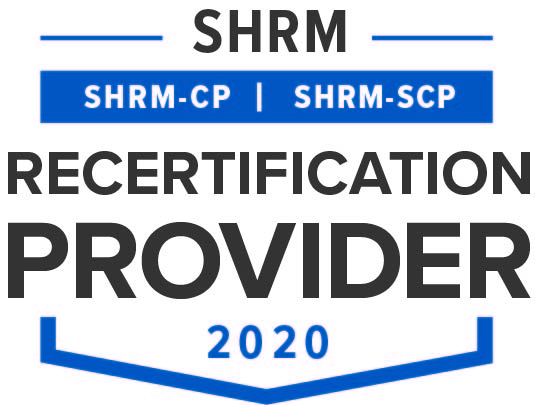Various federal and state statutes require employers to keep employee applications and other employment information for a specified period of time.
The person charged with the administration of personnel files and applications is responsible for ensuring that the required information is retained in conformity with the following guidelines:
Georgia law
|
Type of records |
Retention period |
Coverage |
|---|---|---|
|
Payroll information including employee names, addresses, occupation, daily and weekly hours, and wages. |
One year. |
Every employer of eight or more employees. |
|
Payroll information regarding the type and amount of remuneration paid to employees (for employer state income tax purposes). |
Four years from the due date of the tax to which the records relate, or the date the tax is paid, whichever is later. |
Applies to all employers required to deduct and withhold employee state payroll taxes. |
|
State income tax withholding forms. |
Four years from the due date of the tax to which the records relate, or the date the tax is paid, whichever is later. |
Applies to all employers required to deduct and withhold employee state payroll taxes. |
|
Name and last known address of employees with unclaimed wages. |
10 years after wages are deemed abandoned. |
Every Georgia employer. |
|
Records of all injuries sustained by employees. |
Not specified. |
All employers covered by Georgia workers’ compensation law. |
|
Employment certificates of eligibility for minor employees. |
Until the minor reaches age 18, graduates high school, or receives equivalent of high school diploma. |
Any person, firm, or corporation that employs a minor. |
FLSA – Fair Labor Standards Act
| Type of Records | Retention Period | Coverage |
|---|---|---|
| Payroll records for each employee including (i) full name, identification number (if used on any time, work or payroll records), (ii)home address including zip, (iii) date of birth if under the age of 19, (iv) sex and occupation, (v) day and time workweek begins, (vi) regular hourly rate of pay, the basis on which wages are paid and regular rate exclusions, (vii) hours worked each day and week, (viii) total dailly or weekly earnings, (ix) overtime compensation and basis of overtime computation, (x) total additions to or deductions from wages paid each pay period, (xi) total wages for each pay period, and (xii) date of payment, and the pay period covered by the payment. | Three years from the last date of entry for employers covered by the FLSA. | All employers covered by the FLSA (one employee). |
| Individual employment contracts, collective bargaining agreements, plans, trusts, certificates, and required notices. | Three years from last effective date. | All employers covered by the FLSA. |
| Sales and purchase records, by total dollar volume, weekly, month or quarterly. | Three years | All employers covered by the FLSA. |
| Supplementary basic records - including worksheets showing daily starting and stopping time of employees, wage rate schedules, and work time schedules. | Two years. | All employers covered by the FLSA. |
| Order, shipping, and billing records. | Two years. | All employers covered by the FLSA. |
| Records of additions to and deductions from each individual employee's wages; all employee purchase orders; all records used in determining amount and computation of addition or reduction. | Two years. | All employers covered by the FLSA. |
| Any certificates of age (if applicable). Employer may be required to keep different or additional wage and hour records on employees in certain specialized occupations and on employees who may be otherwise exempt from the FLSA. | Until termination of employment. | All employers covered by the FLSA or child labor laws (at least one employee). |
Title VII - Title VII of the 1964 Civil Rights Act
ADA – Americans with Disabilities Act
GINA – Genetic Information Nondiscrimination Act (GINA)
| Type of Records | Retention Period | Coverage |
|---|---|---|
| Any personnel or employment records, including application forms that an employer makes or keeps and records related to hiring, promotions, demotions, transfers, layoffs, terminations, rates of pay, selections to training programs, etc. | One year from the time the record is made or the personnel action is taken, whichever is later. | Employers covered by Title VII, ADA and GINA (15 or more employees in each of 20 consecutive calendar weeks of the current or preceding year). |
| All personnel records relevant to a charge filed with or actions brought by the EEOC. | Until final disposition of the charge or action. | Employers covered by Title VII, ADA and GINA. |
| EEO-1 report filed with the EEOC. | While current. | Employers covered by Title VII with 100 or more employees. |
ADEA – Age Discrimination in Employment Act
| Type of Records | Retention Period | Coverage |
|---|---|---|
| Payroll records containing each employee's name, address, date of birth, occupation, rate of pay, and compensation earned each week. | Three years. | Employers covered by the ADEA (20 or more employees for each working day in each of 20 or more calendar weeks in the current or preceding calendar year). |
|
Any personnel records that an employer makes and that are related to:
|
One year; or 90 days for applicants for temporary jobs. | Employers covered by ADEA. |
| Employee benefit plans, and seniority and merit systems. | One year after termination of plan. | Employers covered by the ADEA. |
| Personnel records relevant to enforcement action brought against employer. | Until final disposition of action. | Employers covered by the ADEA. |
EPA – Equal Pay Act
| Type of Records | Retention Period | Coverage |
|---|---|---|
| Any records that an employer makes that relate to the payment of wages, evaluations, job wage rates, job descriptions, merit systems, seniority, agreements, or other collective bargaining matters that explain the basis for payment of a wage differential to employees of the opposite sex. | Three years. | Employers covered by the FLSA. |
| All records required to be kept by the FLSA. | Three years. | Employers covered by the FLSA. |
FMLA –Family and Medical Leave Act
| Type of Records | Retention Period | Coverage |
|---|---|---|
|
Basic payroll and identifying employee data, rate or basis or pay and terms of compensation, daily and weekly hours worked per pay period, additions to or deductions from wages, and total compensation paid. Dates FMLA leave is taken by eligible employees (that information may come form time records or employees' requests for leave; leave must be designated in records as FMLA leave and may not include leave required under state law or an employer plan that isn't also covered by the FMLA). The hours of leave if it's taken by eligible employees in increments of less than one full day. Copies of written employee notices of leave furnished to you under the FMLA and copies of all general and specific written notices you give employees as required under the FMLA and its regulations. Any documents describing employee benefits or personnel policies and practices covering paid and unpaid leaves. Premium payments of employee benefits. Records of any dispute between you and an eligible employee over the designation of leave as FMLA leave, including any written statement from either of you covering the reasons for the designation and for the disagreement. |
Three years. | Employers employing 50 or more employees each working day during 20 or more workweeks in the current or preceding calendar year. |
OSHA – Occupational Safety and Health Act
| Type of Records | Retention Period | Coverage |
|---|---|---|
| A log and summary of all "recordable" occupational injuries and illnesses for each establishment (OSHA Forms 300, 300A, 301). | Five years | Private sector employees covered by the Occupational Safety and Health Act with 11 or more full- or part-time employees. |
| Employee exposure records on toxic substances and harmful physical agents (including environmental and biological monitoring information and material data safety sheets). | 30 years. | All employers covered by the Occupational Safety and Health Act (OSHA) |
| Employee medical records (including medical histories, examinations and test results, medical opinions and diagnoses, description of treatment and prescriptions, and employee complaints). | Duration of employment plus 30 years. | All employers covered by the Occupational Safety and Health Act (OSHA) |
IRCA – Immigration Reform and Control Act of 1986
| Type of Records | Retention Period | Coverage |
|---|---|---|
| Form I-9 | Three years after the date of hire; or one year after the date employment is terminated, whichever is later. | Employers employing persons to perform labor or services in return for wages or other pay. |


